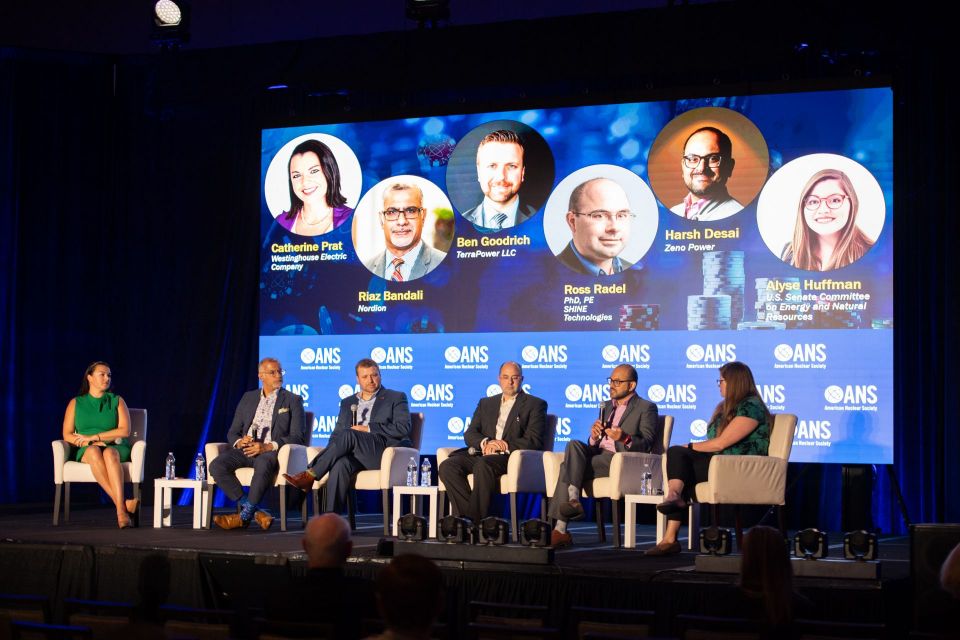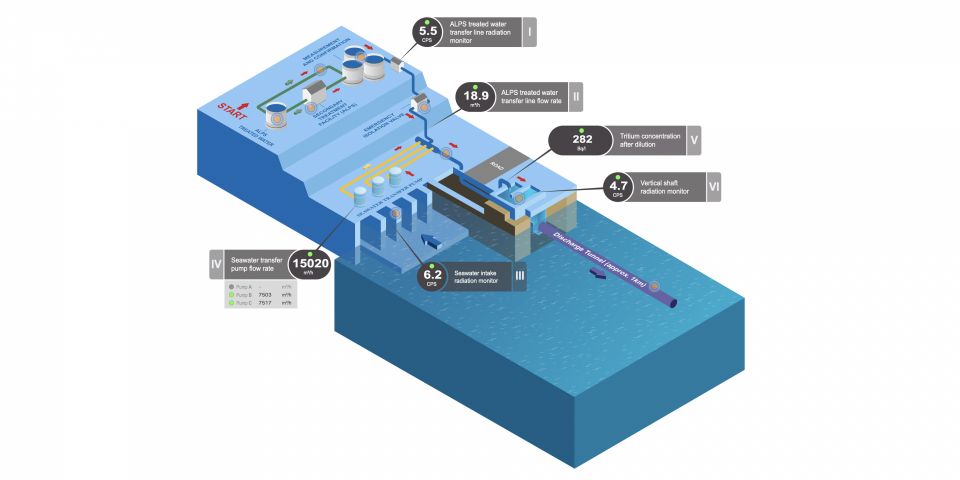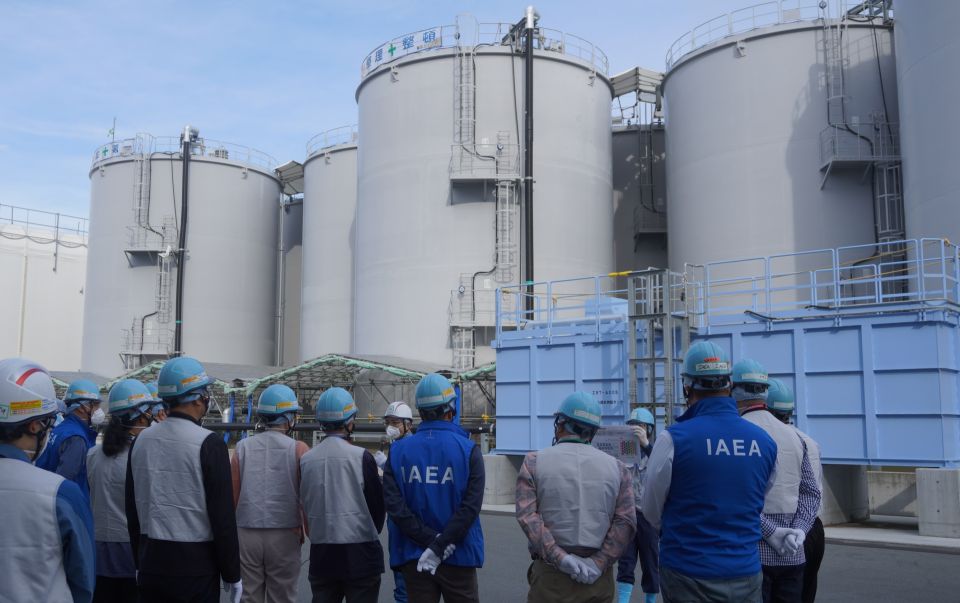Hall talk at ANS special session on Fukushima
Two people with long experience working with the nuclear industry-one in Japan and one in the United States-share some "hall talk" with ANS Nuclear Cafe about Fukushima
At its national meeting held during the last week in June in Hollywood, Fla., the American Nuclear Society conference included two back-to-back special sessions on Fukushima. ANS Nuclear Cafe had an opportunity to talk with two of the speakers in the halls.
Akira Omoto
Akira Omoto is currently a commissioner with the Japan Atomic Energy Commission. Previously, he was at the International Atomic Energy Ageny where he headed up the organization's division of nuclear power. This week he was a speaking to the ANS national meeting in Hollywood.
ANS Nuclear Cafe had a chance to catch up with him at the ANS President's Special Session on Fukushima.
In response to informal questions after the session, he said that the first priority in terms of decommissioning the reactors is to remove the spent fuel from the reactor buildings. Next, it will be necessary to remove fuel and debris from reactors 1, 2, and 3.
Disposition paths for the spent fuel, heat deformed fuel, and debris from the reactor pressure vessels isn't yet clear because Japan does not have a high level waste repository and is years away from establishing one.
Omoto said with uncharacteristic Western directness that Japan's reaction to the announcement by U.S. NRC Chairman Gregory Jaczko calling for Americans to evacuate to 50 miles was "an embarrassment."
He pointed out that Japan had not been consulted and was still working at the time to establish its own basis for evacuating its citizens from around the reactor.
See also Commisioner's Omoto's slides from the ANS President's Special Session on Fukushima held Monday June 27 at the society's national meeting in Hollywood, Fla.
Nuclear energy for sustainable development
I asked Commissioner Omoto to talk about conversations he's had with ordinary people in Japan about the nuclear crisis at Fukushima. He responded that in talks with family members, he has consistently emphasized the need for nuclear energy in Japan.
"It is vitally needed to attain sustainable development. We cannot reach this result without it," Omoto said.
Omoto added, "The shift to a low carbon economy while not abandoning base load electricity is essential to sustain and improve the performance of the Japanese economy."
Mike Weber
Another speaker at the ANS President's Special Session on Fukushima was Michael Weber, deputy executive director, U.S. Nuclear Regulatory Commission.
Weber spoke to the ANS national meeting on Tuesday, June 28, as part of a second panel discussion on the Fukushima nuclear crisis.
He told ANS Nuclear Cafe that he has been involved with the rapidly changing situation in Japan since March 11. One of the first things that struck Weber as the NRC mobilized its emergency operations center was the enormous amount of information coming in from government sources and the Japanese news media and the challenge to make sense of it.
Initially, the NRC sent three people to Japan to assist the Tokyo Electric Power Company, but this was not part of an effort to get the word out generally on what was happening at Fukushima. The White House decided that the U.S. government would not be a source of information on Fukushima. The thinking was that this was a task for the Japanese government.
Moments of anxiety stretch into hours and then days
In the first few days of the Fukushima crisis, Weber felt a strong sense of anxiety about what was going on with the boiling water reactors at the site. The NRC wanted to know the status of the reactors, the condition of safety equipment, and whether everything was under control or whether there were real problems.
"Fundamentally, we wanted to know how much damage there was," Weber said.
"The NRC staff felt a real sense of frustration that we could not do more since this was a Japanese nuclear power station and not a U.S. licensee," Weber said.
Weber, who was working a series of graveyard shifts at the NRC, said that by the third day of the crisis there was more reliable information coming in from Japan.
The NRC's ongoing assessment of the conditions at the Fukushima site was augmented by remote sensing information from a variety of U.S. government sources.
"It was vitally important to know where the radioactivity being released from the plant would go given prevailing winds. DOE's aerial surveys helped us understand what might happen. With over 100,000 U.S. citizens, including military personnel, in Japan, we had to know what was happening," Weber said.
The biggest concern, Weber noted, was whether any of the radiation from Fukushima would reach the United State and at what level.
Human factors
A human factor for the NRC was that it had been a while since the NRC had stood up a 'round-the-clock' emergency response. The agency had staffed its emergency operations center with three shifts of 80 people each. Between March and mid-May there were the inevitable needs to replace people needed elsewhere in the agency or who had to stand down for other reasons.
Weber observed that the newer people had a hard time getting up to speed and were initially less adept working in the emergency operations center.
"To use a basketball term, we didn't have as much bench strength as we thought going into it (Fukushima)," he said
Differences from a U.S. response scenario
Another difference is that in a U.S. incident, the NRC would be getting real time data on reactor temperature, pressure, and other important information. In the Fukushima crisis, the NRC got this information only after the fact, when TEPCO or Japanese government agencies released it.
Also, in a U.S. incident, the NRC would have resident inspectors on the ground acting as the NRC's "eyes & ears" throughout. Initially, in Japan, TEPCO barred the NRC's first three reactor specialists from entering the company's emergency operations center in Tokyo.
Taken together, these factors created the anxiety that Weber referred to as the NRC came to realize that there was no power to run cooling systems or power instruments at any of the reactors.
Revising the NRC's assessment of Fukushima spent fuel pool #4
In mid-March, based on simulation and scenarios, and the limited information available, NRC Chairman Jaczko testified before Congress that the spent fuel pool at reactor unit 4 had lost all of its water.
It took several months to verify that, despite a hydrogen explosion, the fuel assemblies at that location were intact, covered with water, had not been deformed by excessive heat, and that there was only a small amount of debris in the pool area.
Weber said that the condition of the fuel in the pool was verified by use of a video camera and by water chemistry analysis.
"The information we had at the time indicated that there was a significant drain down of the spent fuel pool. As we are now receiving additional information, it appears that there may not have been a significant drain down based on the condition of the fuel and pool water chemistry data."
Weber, who has been through a lot, retains a mostly cheerful disposition about the NRC's continued assistance to Japan and monitoring of the situation. He says that even when he got home at all kinds of odd hours, his family was still there to support him, for which he is grateful.
"They knew when I was spending all this time at the office on a weekend that something was up," he said with a wry smile.
# # #
Dan Yurman publishes Idaho Samizdat, a blog on nuclear energy, and is a frequent contributor to ANS Nuclear Cafe.








.jpg)